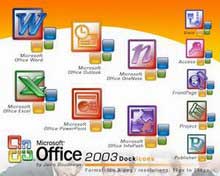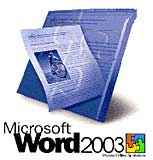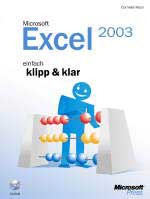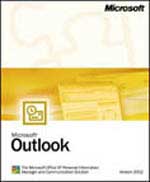10 quick operations with MS Office
Office is a well-known office suite that has made a name for Microsoft. This software suite is very big, Office users only use less than 15% of the software suite, up to this 245 MB. Even with that 15%, we don't know the internal features, shortcuts, quick operation tips, published or unpublished tricks of Word, Excel and Outlook.
 You can buy tons of books on various tips for Office. However, they will be too big and difficult to remember. We provide you with some basic operations, which will help you speed up your work with Office 2003, XP and 2000.
You can buy tons of books on various tips for Office. However, they will be too big and difficult to remember. We provide you with some basic operations, which will help you speed up your work with Office 2003, XP and 2000.
Office zoom feature
If your mouse has a scroll button, you can use the scroll button to zoom in and out. You hold and scroll your mouse up to zoom in, scroll down to zoom out. In order for tools like Word and Excel to work well with this feature, you need to go to Tools-> Options , select the General tab, and check the " Zoom on Roll with Intellimouse box " checkbox .
Shortcut to shortcut
If you don't remember the shortcut, you want to learn and review them? Too simple, Office will help you quickly "memorize" with these shortcuts. Select Tools -> Customize , select the Options tab, check the box " Show shortcut keys in ScreenTips ". Now, every time you hover your mouse over an icon in the toolbar, it will describe not only the functionality of those icons, but also shortcuts for you.
Work with Word
 Automatically with AutoText
Automatically with AutoText
Word provides automatic replacement of a phrase with just one click instead of typing. For quick access to AutoText, just right-click anywhere on the toolbar, select AutoText. You will find a menu that allows you to select phrases as well as text clusters that you add yourself.
Return to the location you just left
You are drafting a long document, you switch to another application for some reason. But when you go back to that text, you don't know where you're typing, or moving to that place is quite time consuming. You don't know which keyboard shortcuts can help you get to the right place? Very simple, you just need to keep -. In fact, you can repeatedly press this key combination to get to the last 3 places you created the change.
Two windows on one screen
When you are drafting a document, or just compare different sections of a document. This is interesting when you have two text frames that can slide independently of the same text. Choose Window -> Split. A split bar will appear, using the mouse to move the line you want to split the screen into 2 parts and click. Any change of one of these views will change the view. You want to switch to a single window mode as before, double click on the split bar.
Working with Excel
 Change the Enter direction
Change the Enter direction
You have a worksheet with lots of cells, moving between cells as quickly as possible is very effective at work. The simplest way is to press the Enter key. By default, when you press Enter, the cursor will move down to the box below. If you don't like that way, you can change the default direction to your liking. Select Tools -> Options, select the Edit tab and select Move selection after Enter, select the direction you want, press Ok.
To move from one spreadsheet to another, simply click the Sheet tab at the bottom of the screen. If you want faster, you just need to press the combination - and - to switch between worksheets.
Page with page break
If you have ever printed spreadsheets, there are only a few columns and several rows on a different page. They look so bad! How to avoid this problem? To see when the spreadsheet will be split, select View -> Page Break Preview. If this is your first time using this feature, you will see a "hello" screen - this screen is not really useful. Please check the Do not to show it again box to turn off this screen the next time you use it. You use horizontal and vertical scroll bars to see how Excel separates the page. Pages will be marked with a large label and the page break will be bold. You can edit this page break line by mouse.
To set the page break manually, select the cell that will be the first cell of the page. Then select Insert -> Page Break. Later, if you want to remove the break page, select Insert -> Remove Page Break.
Use AutoFill feature
Excel can create a sequence of serial numbers, dates, days of the week, month and year. To do this, you only need to enter the value of 1 or 2 values of that sequence into cells and AutoFill will automatically fill in for you.
- Enter a number sequence: To fill in a sequence of numbers, you enter the value 1 into a cell, value 2 in the next box, and then you select both cells. Now your cursor will be a plus symbol (not plus plus arrows), you just need to drag that word to the place you want. You will see cells with increasing values (3,4,5, .). If you enter 100, 200 you will also have values of 300, 400, 500 .
- Enter dates: Similarly, if you fill in a day of the week, or a month of the year, Excel can automatically fill in the value with AutoFill. If you enter the last day of the month, AutoFill will switch to the first day of the next month. Excel can fill in a range of years or quarters such as 2004, 2005,2006, or Q1, Q2, Q3, and Q4.
By default, AutoFill will copy both the value and format of the cells you choose. To select either, right-click when dragging. When you release the mouse, you will see the Fill Formatting Only option or Fill Without Formatting. If you don't like the way AutoFill fills in the data, you can select the AutoFill Smart Tag item for more options.
Working with Outlook
 Contact faster by nickname
Contact faster by nickname
All information about partners in Outlook always includes a field called Nickname. While you can put your friends' nicknames in, you can do it very quickly and accurately when entering your mail address when sending mail.
To use this field, go to the partner information, select the Details tab, and set the name you want to use as the shortcut to the partner's information. You don't have to enter each person's full name into the nickname, the goal is that you can easily distinguish one person from another and you can get the information quickly. When you send a message to someone, just type the nickname in the "To:" field.
Create more space
Outlook 2003 is designed with 3 frames, in which the reading frame is on the right, allowing easy reading without having to open each message to read. However, in some cases, you need more space to read. Press Alt-F1 to turn on / off the browser frame, turning off the browser frame will give you more space to read the message. After trying this method, you will feel much more interesting - no more scrolling or scrolling.
 Manually print shortcuts in MS Word
Manually print shortcuts in MS Word Open and save Word documents
Open and save Word documents Explore the MS Word toolbar
Explore the MS Word toolbar Print text file
Print text file Text file format
Text file format Function Tracks Change, Comments in Microsoft Word
Function Tracks Change, Comments in Microsoft Word